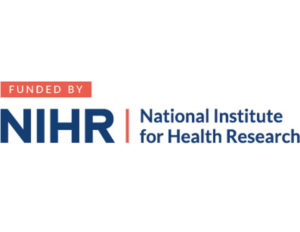Primary care models for the detection of clinically significant prostate cancer: the ProsDetect study
Start Date Feb 2022
Code E25-Aff
Status Ongoing
Introduction
Prostate cancer is the most common form of cancer in UK men, with over 40,000 new cases diagnosed each year. Up to 15% of patients are diagnosed with indolent forms of the disease which do not cause harm or death and which do not require radical treatment. A key challenge is how to identify men with clinically significant forms of prostate cancer early, while avoiding overdiagnosis of indolent disease and over-investigation of those with benign disease. In the UK, most men with prostate cancer are diagnosed after visiting their GP and being tested for PSA. However, the diagnostic performance of PSA for the detection of clinically significant prostate cancer (or all prostate cancer) in primary care is unknown.
Research question:
What is the diagnostic performance of Prostate Specific Antigen (PSA) for the identification of clinically significant prostate cancer in primary care and can this be improved by incorporating additional information within a multivariable model?
Funding
NIHR Research for Patient Benefit competition 43 £149,710.00.
Aims & objectives
Objectives:
1) To determine the diagnostic accuracy of PSA in men presenting to UK primary care for the identification of (a) clinically significant prostate cancer, and (b) all prostate cancer.
2) To develop multivariable models, incorporating PSA, symptoms, demographics, and risk factors to determine the probability of (a) clinically significant forms of prostate cancer, and (b) all prostate cancer in men presenting to UK primary care.
Methodology
This retrospective cohort study will use routinely collected primary care and cancer registry data from over 220,000 men who underwent PSA testing in primary care in England (2010-2015). The diagnostic accuracy of PSA for the detection of clinically significant prostate cancer and all prostate cancer will be determined, applying National Institute for Health and Care Excellence (NICE) advocated age specific cut-offs. Multivariate logistic regression will be used to develop diagnostic prediction models containing the most predictive variables available within GP records. These models will be used to estimate the probability of undiagnosed clinically significant prostate cancer and all prostate cancer in individual patients. A bootstrap validation approach will be used to calculate optimism corrected measures of model performance. The sensitivity and specificity of models, at a range of risk thresholds, will be compared with that of PSA at age specific cut-offs used in current practice.
Outputs & impact
We anticipate developing models which are able to detect clinically significant prostate cancer in men presenting to primary care with greater accuracy than the current method (PSA at age specific cut-offs). If implemented within the diagnostic pathway, such models could benefit patients and the healthcare system by reducing unnecessary specialist referrals, investigations and treatment, and targeting urgent specialist investigations at patients at greatest risk of having undiagnosed clinically significant prostate cancer. We plan to disseminate study findings through national conference presentations, academic publications and a public engagement program.
Next steps
On study completion, we aim to perform follow-up research to externally validate our models, integrate them into GP IT software within an e-Clinical Decision Support (eCDS) tool, and assess the health economic implications of applying model thresholds within UK primary care.
Publications
- Green HD, Merriel SWD, Oram RA, Ruth KS, Tyrrell J, Jones SE, Thirlwell C, Weedon MN, Bailey SER. Applying a genetic risk score for prostate cancer to men with lower urinary tract symptoms in primary care to predict prostate cancer diagnosis: a cohort study in the UK Biobank. Br J Cancer 127, 1534–1539 (2022). doi: 10.1038/s41416-022-01918-z



